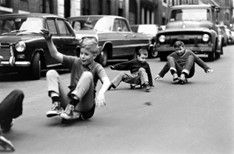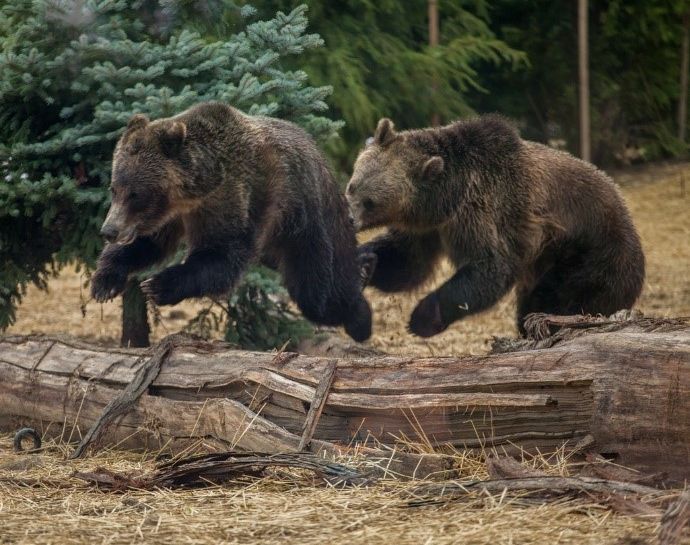We're looking for original thinkers...as outlined in these "thinking outside the box" guidelines!
Creativity is seeing what others see and thinking what no one else ever thought. Albert Einstein
It was George Lands that introduced the creativity test in 1968 as part of NASA selection. Expanding this test to the general population, he found that the extent in which people look at problems then come up with new innovative ideas varies dependent on age. His study found that 98% of 5-years-olds were deemed creative based on his test. The same children when they were 10-years-old, scored 30%, and when 15-years old scored 12%. The study was extended and tested hundreds of thousands adults with average age 31 years, the resultant creative test score was only 2%!

He says that “non-creative behaviour is learned” and that we all need to “find the 5-year-old” within us. We previously highlighted that creativity is seen as one of the sought after skills of the future and if only 2% of adults demonstrate it, then we need to unlearn being non-creative!
Although some have questioned the availability of data that supports George Lands study, there is research that adults default to finding an immediate solution as opposed to creating many potential solutions for examination – the focus is on getting things done. They are more likely to lean on convergent thinking vs divergent thinking.

“Children can teach us that if we really want to learn about the world, we need to open ourselves up to new possibilities” Alison Gobnik
Are our children growing up in an environment that stifles creativity?
We are not experts in education and schooling curriculum, but rote learning, and focusing on content to satisfy restrictive and specific examination seems to go against the grain for imaginative thought. It must be hard for the amazing teachers who want to allow the class to go off on a tangent, exploring related concepts, but feel they can’t as time pressures and OFSTED determine otherwise. One of the most viewed TedTalks explores how our schools could be diminishing creativity but we are not sure how much heed has been taken in the 15 years since. Sir Ken Robinson says that “we don’t grow into creativity, we get educated out of it”. Giving space for children to be divergent in their thinking and guiding them through cognitive thought processes allows original thought to flourish whilst helping bring it to life.
The Montessori way is embraced around the world and captures some of this approach to education. Well known graduates of Montessori schools include Jeff Bezos (founder of Amazon); Sergey Brin and Larry Page (co-founders of Google); Anne Frank (World War II diarist); Prince William and Prince Harry; George Clooney (actor); Chelsea Clinton, (daughter of Bill and Hilary Clinton).
Rutgur Bregman, in his book, Humankind, cites an interesting case study about Agora, a school in Roermond, Netherlands. The environment is designed to embrace a more creative approach. There are no classrooms, no classes, no homework, no grades, no tests, no times-tables. Students are in charge, teachers are ‘coaches’ and children come from all types of backgrounds. Difference is normal and bullying is not reported. The results are significant where pupils literally create their future together.
When it comes to how our children socialise and play, many toys now have instructions and step-by-step guides that detract from creative expression. And we live in a world where it is less likely for children to be playing outside from 8am through to 9pm, building dens and alike, being uncontactable unless they decide upon using a payphone box. Or commonly kids communicate through virtual worlds and mobile phones. Is this diminishing the potential for creative genius?

“Every child is an artist. The problem is how to remain one when grown up” Pablo Picasso
In his book, The Creative Spark: How Imagination Made Humans Exceptional, Augustín Fuentes shows that humans have progressed so significantly due to their creativity and cooperation. It is our ability to imagine and think beyond our current reality that allows us to take big leaps forward. If there is plenty of evidence to suggest that working together and being creative benefits individuals, society, the economy and more, then what stops us?
How do we encourage creativity as adults?
Some people will say that they are not the creative types, but as George Lands and others attest, everyone has the potential to be creative, balancing their diverse and cognitive thought processes.
Matthew Walker, in his book “Why We Sleep”, shares that one thing we must do is ensure a good night’s sleep to allow us to move through our cyclical Rapid Eye Movement (REM) sleep. This is the type of sleep where dreams occur and it is now understood that REM sleep “helps us come up with remarkable creative insights into previously impenetrable problems”. Matthew Walker says that “during the day, it’s like a Google search gone right. You search something, and what you see what’s on page 1 of the search results. But during REM sleep, it’s like you search something and jump straight to page 20”. The brain is able to make connections it would not otherwise make which is why a problem may look very different when you awake after a good nights sleep.
We need to make time for our hobbies and down-time meaning we engage in activities that are enjoyable and/or allow us to disconnect from the day-to-day. What are you doing when you have your best ideas? It is likely you will be in the shower, walking the dog, doing a jigsaw, or even reading a book.
We should introduce more play into our lives (for us and our children). In the animal kingdom it’s found bears that play the most, survived the best despite the act of play taking away time from things like eating. It makes sense as it prepares bears for hunting, understanding social cues, and trying new things out in a safe environment. Play gives us humans the opportunity to do the same, pushing the boundaries without fear of failure or recrimination.

All of us are creative – it’s about unleashing it through practice and habit forming. It applies in organisations too. What problems or challenges could you overcome by embracing creativity at work? What first action could you do now to shift the dial on creativity with your team?
We don’t need to be like Picasso or Mozart to demonstrate our creative tendencies. In the LEGO® SERIOUS PLAY® sessions we facilitate, we see it in action. Every workshop starts with people getting familiar using LEGO® bricks and sometimes there is a concern from participants that they are expected to be LEGO® masters – creating the seemingly impossible! It is amazing to see those first builds and compare to the builds at the end of each workshop. The difference is staggering in terms of how the LEGO® pieces are used, the way the models are constructed, and the stories/ideas that they uncover. We believe that you already have the answers, it is just about digging deep to reach them. LEGO® SERIOUS PLAY® is a methodology that enables this.
“A vivid imagination compels the whole body to obey” Aristotle
Why not kick-start a bit of creative thought yourself and use the Liberating Structure, Drawing Together, to help you?
Ask yourself the question – what stops me from unleashing my creative genius? Follow the liberating structure sequence as an individual and have a conversation with someone else about it. It may well lead to you do something you never would have thought of doing!
Visit www.prometheanplay.co.uk to find out more.
[picture credits : young boys on skateboards from www.coolerlifestyle.com; bears playing courtesy of Benjamin Lehman / unsplash.com]
